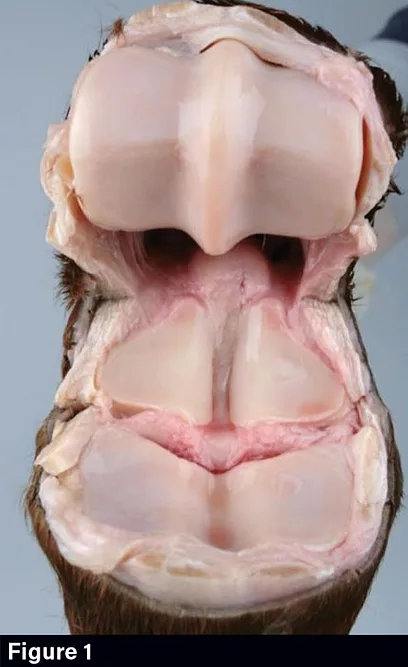American Farriers Journal
American Farriers Journal is the “hands-on” magazine for professional farriers, equine veterinarians and horse care product and service buyers.

Asymmetrical articular surfaces of the fetlock joint. Dr. Jenny Hagen
Laterality, or handedness, in horses is receiving increasing attention in training, riding, orthopedic treatment and manual therapy. Riders and trainers often describe that horses have a “strong” and a “weak” body side. Often the “hollow side” and the “constrained side” are mentioned in this context.
Scientific studies proved that horses can be bent and worked more easily on one hand during longeing and riding, while they show a stronger resistance in bending or less flexibility on the other side (Meij et al. 1980). Structural or functional asymmetries in the musculoskeletal system are also noticeable during manual therapy or orthopedic treatment. Usually, symmetrical training is recommended to strengthen the “weak,” “stiffer” side. However, for optimal training and the understanding of uneven hoof and limb conformation, detailed consideration should be given to the horse’s handedness.
It’s necessary to differentiate between three terms. A distinction is correctly made between natural skewness, as well as motor and sensory laterality. All three terms are clarified below.
Natural skewness is the asymmetrical development of the bones, joints, tendons, ligaments and muscles of both halves of the body. This particularly develops during the maturation of the musculoskeletal system in young…